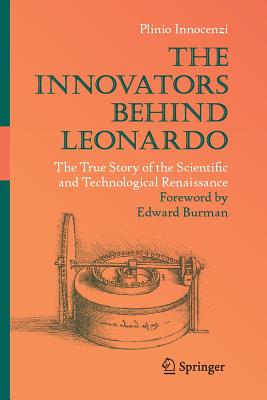-
出版商:
Springer
-
出版日期:
2014-04-12
-
售價:
$2,420
-
貴賓價:
9.5 折
$2,299
-
語言:
英文
-
頁數:
267
-
裝訂:
Hardcover
-
ISBN:
149390535X
-
ISBN-13:
9781493905355
商品描述
The Digital Da Vinci book series opens with the interviews of music mogul Quincy Jones, MP3 inventor Karlheinz Brandenburg, Tommy Boy founder Tom Silverman and entertainment attorney Jay L. Cooper. A strong supporter of science, technology, engineering and mathematics programs in schools, The Black Eyed Peas founding member will.i.am announced in July 2013 his plan to study computer science. Leonardo da Vinci, the epitome of a Renaissance man, was an Italian polymath at the turn of the 16th century. Since the Industrial Revolution in the 18th century, the division of labor has brought forth specialization in the workforce and university curriculums. The endangered species of polymaths is facing extinction. Computer science has come to the rescue by enabling practitioners to accomplish more than ever in the field of music. In this book, Newton Lee recounts his journey in executive producing a Billboard-charting song like managing agile software development; M. Nyssim Lefford expounds producing and its effect on vocal recordings; Dennis Reidsma, Mustafa Radha and Anton Nijholt survey the field of mediated musical interaction and musical expression; Isaac Schankler, Elaine Chew and Alexandre François describe improvising with digital auto-scaffolding; Shlomo Dubnov and Greg Surges explain the use of musical algorithms in machine listening and composition; Juan Pablo Bello discusses machine listening of music; Stephen and Tim Barrass make smart things growl, purr and sing; Raffaella Folgieri, Mattia Bergomi and Simone Castellani examine EEG-based brain-computer interface for emotional involvement in games through music and last but not least, Kai Ton Chau concludes the book with computer and music pedagogy. Digital Da Vinci: Computers in Music is dedicated to polymathic education and interdisciplinary studies in the digital age empowered by computer science. Educators and researchers ought to encourage the new generation of scholars to become as well rounded as a Renaissance man or woman.
商品描述(中文翻譯)
《數位達文西》書系列以音樂大亨昆西·瓊斯(Quincy Jones)、MP3 發明者卡爾海因茲·布蘭登堡(Karlheinz Brandenburg)、Tommy Boy 創辦人湯姆·西爾弗曼(Tom Silverman)和娛樂律師傑·L·庫珀(Jay L. Cooper)的訪談開場。作為科學、技術、工程和數學(STEM)教育計畫的強力支持者,黑眼豆豆(The Black Eyed Peas)創始成員威爾·艾姆(will.i.am)於2013年7月宣布他計畫學習計算機科學。列奧納多·達文西(Leonardo da Vinci),作為文藝復興時期的典範,是16世紀初期的意大利博學者。自18世紀工業革命以來,勞動分工促進了勞動力和大學課程的專業化。博學者這一瀕危物種正面臨滅絕的危機。計算機科學的出現拯救了這一局面,使從業者在音樂領域能夠比以往任何時候都更有效地完成工作。在本書中,牛頓·李(Newton Lee)講述了他在製作登上《告示牌》排行榜的歌曲過程中的經歷,類似於管理敏捷軟體開發;M. Nyssim Lefford 解釋了製作及其對聲音錄製的影響;丹尼斯·瑞茲馬(Dennis Reidsma)、穆斯塔法·拉達(Mustafa Radha)和安東·尼霍特(Anton Nijholt)調查了媒介音樂互動和音樂表達的領域;艾薩克·香克勒(Isaac Schankler)、伊萊恩·周(Elaine Chew)和亞歷山大·法朗索瓦(Alexandre François)描述了使用數位自動支架進行即興創作;施洛莫·杜布諾夫(Shlomo Dubnov)和格雷格·薩吉斯(Greg Surges)解釋了音樂算法在機器聆聽和作曲中的應用;胡安·巴布羅·貝洛(Juan Pablo Bello)討論了音樂的機器聆聽;史蒂芬和蒂姆·巴拉斯(Stephen and Tim Barrass)讓智能設備發出低吼、呼嚕和歌唱的聲音;拉法埃拉·福爾基耶里(Raffaella Folgieri)、馬蒂亞·貝爾戈米(Mattia Bergomi)和西蒙·卡斯特拉尼(Simone Castellani)檢視了基於腦電圖(EEG)的腦機介面在音樂中對情感參與的影響;最後,邱凱頓(Kai Ton Chau)以計算機和音樂教育學結束本書。《數位達文西:音樂中的計算機》致力於在數位時代推動博學教育和跨學科研究,這一切都得益於計算機科學。教育工作者和研究者應鼓勵新一代學者成為像文藝復興人一樣全面發展的人。






























